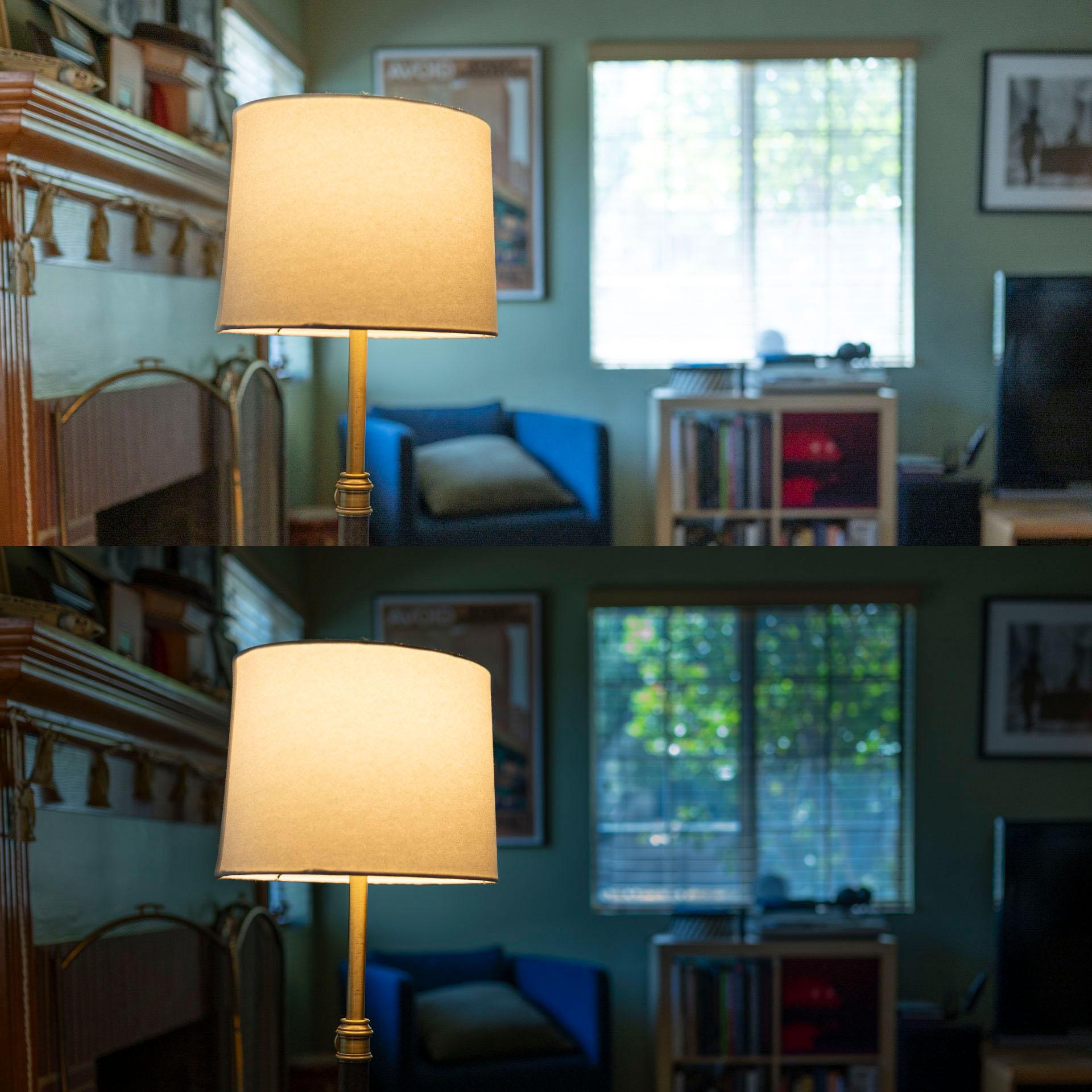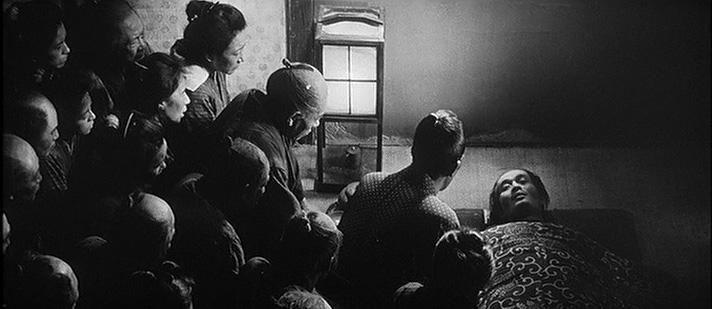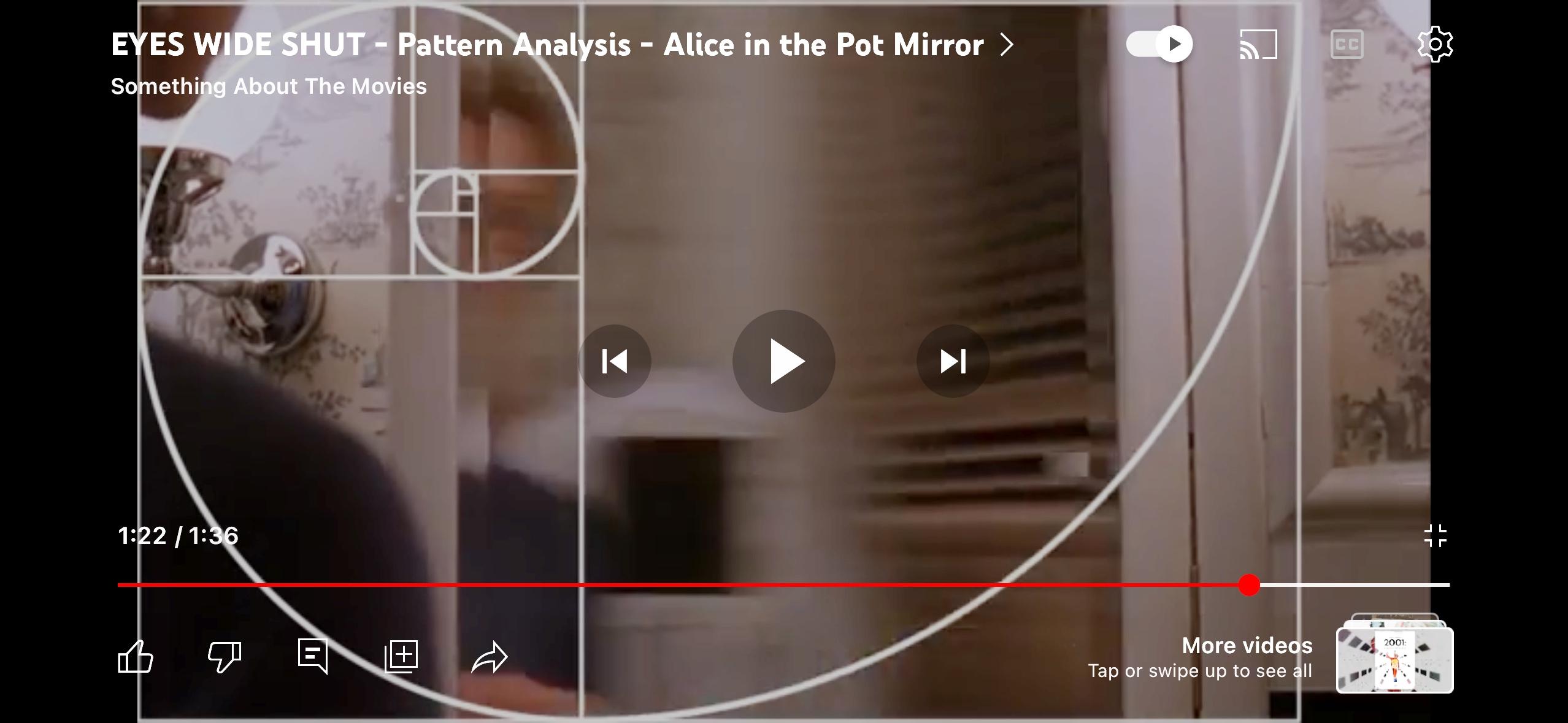Forum Replies Created
-
AuthorReplies
-
We mention gels on windows because we’re talking about the color temperature issues when mixing daylight with tungsten practicals. A camera filter would just shift everything in one direction, not reduce the difference between two sources of different color temperatures.
I still use tungsten bulbs in lamps, partly because the Astera NYX bulb is on the large size and looks odd in a period show inside a lamp. But sometimes I’ve used normal daylight LED bulbs in lamps on location with a lot of daylight windows. I’ve even used daylight LED candelabra bulbs in chandeliers & sconces sometimes. The store-bought LED bulbs can have a bit of green in them though.
Like Roger, I often embrace the color temp differences but on a few locations, I have added 1/2 CTO to windows to reduce some of the difference.Here is a quick test I just did showing that uncorrected daylight feels a bit bluer when it is less bright and washed out:

Some DPs will use 1/2 CTO to correct daylight windows to have less of a difference with tungsten practicals inside.
There were also blue-dipped tungsten photoflood bulbs that were in the mid-4000s in Kelvin — today you could use an RGB LED bulb for some control or a daylight LED bulb if you didn’t want any warmth.
Keep in mind that the blue of uncorrected daylight is often less saturated than when uncorrected HMIs are used for dim moonlight because daylight is brighter in exposure, which washes out some of the blue color. A bright uncorrected daytime window on 3200K film looks less blue than if you put ND1.2 gel on it, for example, and made it a darker window.
Roger, the “Ur-Leica” by Barnack dates back to 1914 — that and other early 35mm still cameras were all horizontal movements around 36mm x 24mm and started with a 50mm lens.
But the 4-perf 35mm cinema camera predates those and it also used a 50mm!
So there must have been a reason why 50mm was used in both systems despite the different fields of view. Was it easier to design and build at a reasonable f-stop? Was it harder to make a 35mm focal length back then with the restriction on number of elements due to light transmission loss that was undistorted on the edges? Larger still camera formats like 4×5 and 8×10 that were in use in the 1800s used longer lenses.
It’s a loaded topic. The truth is that 50mm is considered “normal” in view for the 35mm still format (8-perf 35mm) which is more like a 35mm in 4-perf 35mm cine. But the 50mm was the most common lens made for early cinema cameras so most silent era movies were shot on it and built their sets to accommodate that view, meaning they had room to back up the camera to hold actors head to toe. So 50mm became the “normal” lens for cinematography too (which predates the 35mm still camera format) but is actually a bit on the long side in 4-perf 35mm.
But also remember silent movies were shot Full Aperture, the 50mm looked slightly tighter on the 1.37 Academy sound format and even tighter when that was cropped vertically to 1.85 in the 1950s, at which point filmmakers who were used to the 50mm view in Academy started to use a 40mm (or even 35mm) to compensate.
I don’t know why the first lens made for cinema cameras was a 50mm, whether that was the easiest to design or because it was considered “normal”, who knows. I wouldn’t think too much about whether a lens is “normal” or not.
The thing to remember is that the goal isn’t always to be immersive and create a subjective “hot” experience; sometimes there is a reason to create a more remote, objective “cool” experience. Look at Gordon Willis’ work, which is mostly medium focal-length, or Ozu’s. There is a touch of distancing that works; both “The Godfather” and Ozu’s movies tend to be about group behavior — the family — rather than completely center around one person’s emotional experiences, which is more of a Hitchcockian thing (and even Hitchcock liked medium focal-lengths.) Certainly “The Parallax View” feels very cool and observational for the most part, mixed with more subjective moments. You see scenes from Warren Beatty’s eyes but then you feel like he’s being coldly watched from a greater distance.
There are a number of reasons one picks a certain focal length. When long lenses are combined with a distant camera position, the resulting compression of shapes creates certain graphic effects that may be dramatically interesting.
Look at this shot from Kurosawa’s “Red Beard”, reportedly shot on a 500mm anamorphic lens (so 250mm spherical equivalent) at f/22 for a deep focus. The effect is that everyone’s head in the scene is the same size; this works dramatically because it is about a village coming together to hear the sad story of a dying man who is well-loved.

On a smaller scale, when I’ve shot in crowded clubs and restaurants, the only issue when shooting close on wider-angle lenses is that the camera is “inside” the crowd so you don’t have a sense that there are characters behind the camera in the room. But back up a little and use a medium focal length and the main character can be framed between some foreground people to create a visual sense that they are surrounded on all sides. If that’s an important story point, then there is a reason for shooting it that way.
There are no standards or rules for focal lengths for establishing wide shots or master shots. If you are outdoors in open space, you can pick the focal length based on the expansion/compression effect you want on objects and the working distance / subject size you want, and the affect on motion, whether lateral or forward/reverse.
Indoors, there may be space restrictions that keep you from using longer focal lengths to create a wide shot, if that’s what you wanted to do. Kurosawa, for example, liked longer lenses so would design the set, whether on stage or on location, to have a removable wall to allow him to back up the camera.
If you are shooting an interior movie on location, you might want to scout with a lens app to figure out what focal lengths you can use to get wide shots and work from there, maybe that gets incorporated into the style of the film if you have to work in smallish rooms in the 18mm to 35mm range (in Super-35) for most wide to medium shots.
Astera tubes are a bit heavy but perhaps a long strip of velcro on the wall and the backside of the tube? Remember you’ll need to pull them down to recharge or replace.
I think the trick for most cinematographers is actually to NOT visualize a script while reading it for the first time!
I don’t think Kubrick had a negative attitude towards digital effects.
It’s just that he had the time and budget to solve some technical problems on set rather than fix them in post. Building a set with a camera port like that just requires planning, something that Kubrick had time to do. Even if this shot was conceived during a rehearsal, he had time to have his art department change the set and then come back to it in a day or two to shoot the mirror shot. Truth is that a camera port like that might have been conceived in a morning rehearsal and built during a lunch break or even faster. If the production designer allows it, I’ve had my key grip come out with a power saw and cut a hole in a set wall within a few minutes then asked the on-set dresser to hide the hole with something.
Articles at the time mentioned 100T film being used for day exteriors on “No Country for Old Men”.
You can get a denser-than-normal negative by either rating the film ISO slower or just increasing the exposure after your meter reading, it’s the same thing. Or by extended development.
There’s a camera port cut into the set wall:

Roger has used strong colored lighting on occasion, there was the blue-lit face of Daniel Craig in the car in Shanghai (Skyfall), the orange light of Las Vegas and the magenta light when K sees the large hologram advertisement of Joi (Blade Runner 2049), etc.
It comes down to story (the color is emotionally or symbolically motivated, or plot-driven), whether the colored light is naturally motivated (it would be odd if someone was right next to a red neon sign and not have red light on them), and taste.
Sometimes an image is very strong visually because the filmmaker wants to mark that moment in the viewer’s mind.
In theory there wouldn’t be much difference shooting under completely red lighting and under white lighting with a red filter. However sometimes darkrooms have faint tiny lights on machines that would give you a small non-red spot of light.
The main issue to consider is loss of sharpness when everything is red due to the fact that only 25% of the Bayer filter is red — plus your camera may be recording in something other than 4:4:4.
Softness under red light is an issue even when shooting film.
I haven’t tested this myself, but some have suggested shooting under white light or some color light that still allows information to be recorded in the other two channels, maybe magenta or orange light (or filter) and then correcting the image to red in post color-correction. In theory, this may help you retain some sharpness. Worth testing.
-
AuthorReplies
